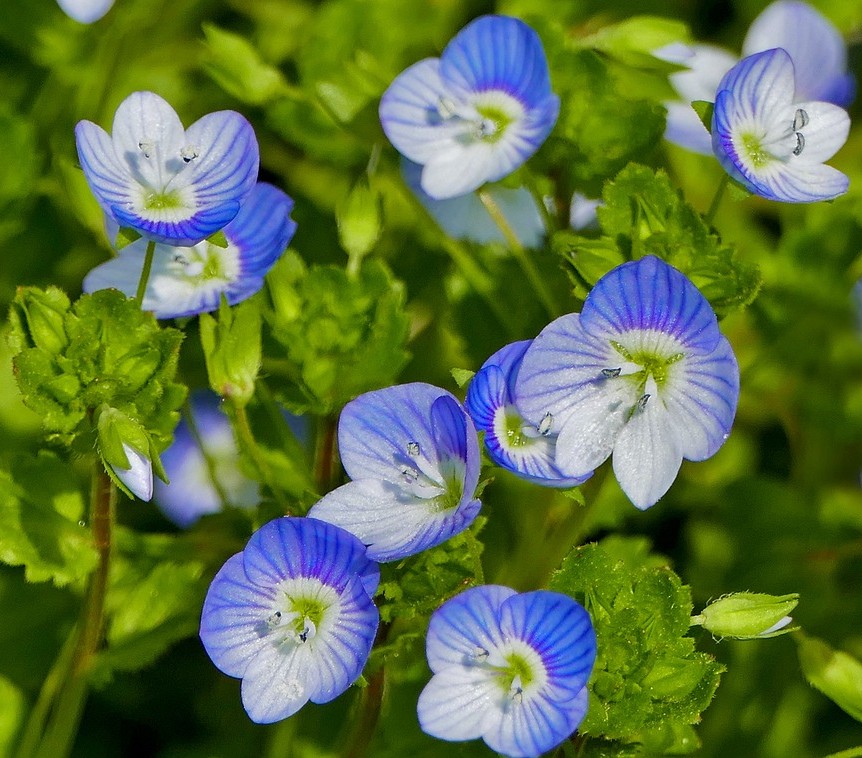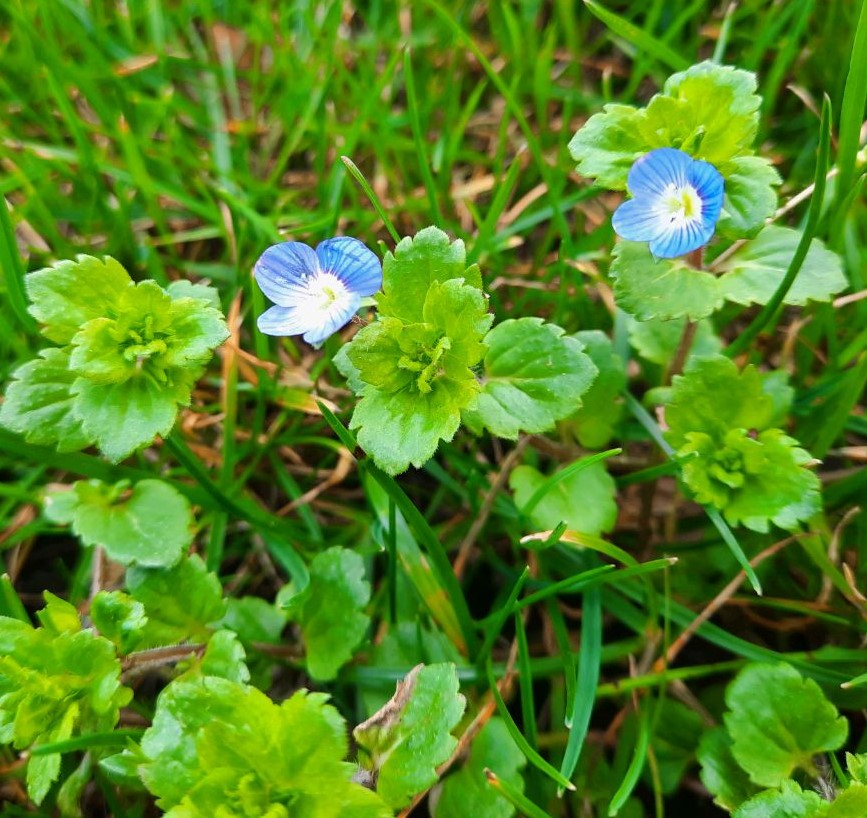Common Weeds with Blue Flowers: Lawn Care Tips
01 April 2025
Blue-flowered weeds may add a splash of colour to your lawn, but don’t be fooled, many of them are invasive and difficult to control. While some varieties like green alkanet or germander speedwell might appear charming at first glance, these weeds can spread quickly and compete with healthy grass for space, nutrients, and sunlight.
Whether you’re dealing with tiny blue blossoms nestled in your lawn or aggressive creepers that pop up every spring, knowing what you’re up against is the first step toward effective weed control. In this guide, we’ll help you identify the most common blue-flowered weeds found in UK lawns and offer practical tips for keeping them under control.
Green Alkanet (Pentaglottis Sempervirens)

Description:
Green alkanet can be distinguished from other weeds through its bright blue flowerheads and its oval shaped hairy leaves.
Season:
Green alkanet flowers in mid-spring to early summer, from April to June.
Growth Habits:
Green alkanet has a deep system of lateral roots known as a taproot system, which can grow into new plants if broken off. It also self-seeds near to itself, so the weed can quickly become a patch.
Common lawn issues:
It is a strong perennial weed that can smother the grass plant and outcompete it for nutrients.
Control:
Deadheading green alkanet before it starts to seed can help to prevent it from spreading in your lawn.
Selective weed control, which is a part of both our Early Season Treatment and Mid-Season Treatment, can help to tackle broad-leaved docks.
Germander Speedwell (Veronica Chamaedrys)

Description:
Germander speedwell can be identified by its radiant blue flowers that have inner white centres and its hair-lined, pointed leaves.
Season:
Germander speedwell flowers during early spring to mid-summer, from March to July.
Growth Habits:
Germander speedwell is a creeping weed and can quickly establish itself in a lawn without being noticed.
Common lawn issues:
Speedwell is a low-growing weed so it can survive low mowing regimes. It is a particularly stubborn weed which can take many applications of weed killer to control it.
Control: Germander speedwell can not establish itself in a lawn that is thick and healthy as it struggles to compete. Our Annual Lawn Care Programme has fertilisation treatments that will help to strengthen and thicken up the grass in your lawn.
Slender Speedwell (Veronica Filiformis)

Description:
The most prevalent species of speedwell found in UK lawns. It is identified by its light blue flowers consisting of four petals.
Season:
Its flowering period is from mid-spring to mid-summer, from April to July
Growth Habits:
Slender speedwell grows in dense patches. It can creep across lawns through its stems that can root at their nodes.
Common lawn issues:
Speedwell is a stubborn weed that can quickly become a problem in lawns. Due to its dense nature, it can blanket large areas of lawns, smothering grass plants.
Control:
Slender Speedwell is very resilient to weed killers due to the nature of its small leaves. This means it can take multiple applications to control.
Need help identifying other weeds by flower colour?
White-flowered lawn weeds like daisies, yarrow and white clover can be just as invasive. Learn more about how these weeds can be identified and controlled.
Bright yellow flowering weeds are often spotted in early spring and summer. This guide helps you identify yellow bloomers like dandelions and creeping buttercup, and offers tips to control them.
Red-flowering weeds are not as common as your white or yellow flowering weeds, however, they can still pop up in your lawn. You can learn more about how to identify these red-flowered weeds and how to control them.
Some lawn weeds bloom in shades of pink or purple and can be deceptively attractive. From creeping thistle to selfheal, find out how to spot and remove these colourful invaders.
Need Help Controlling Blue Flowering Weeds?
If your lawn is being overrun by blue-flowered weeds, our expert team is here to help. We offer:
• Selective weed control treatments
• Soil fertilisation to boost lawn health
• Seasonal lawn care programmes tailored to your garden
Contact us today to learn how we can keep your lawn weed-free all year round
Back to Blog listings